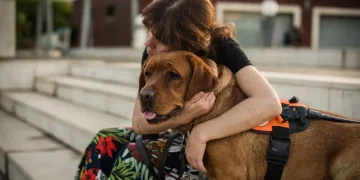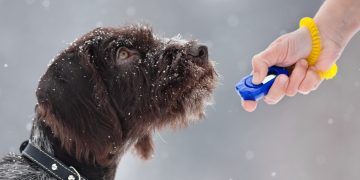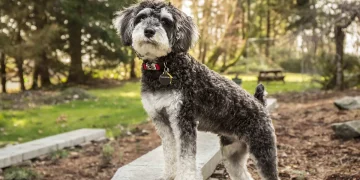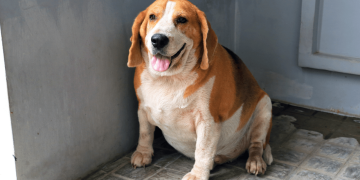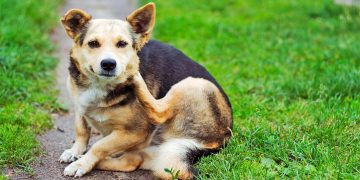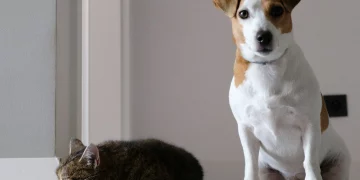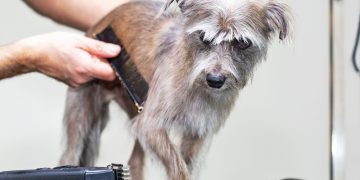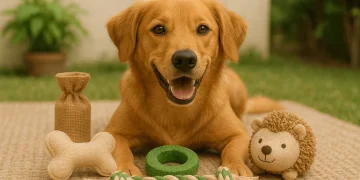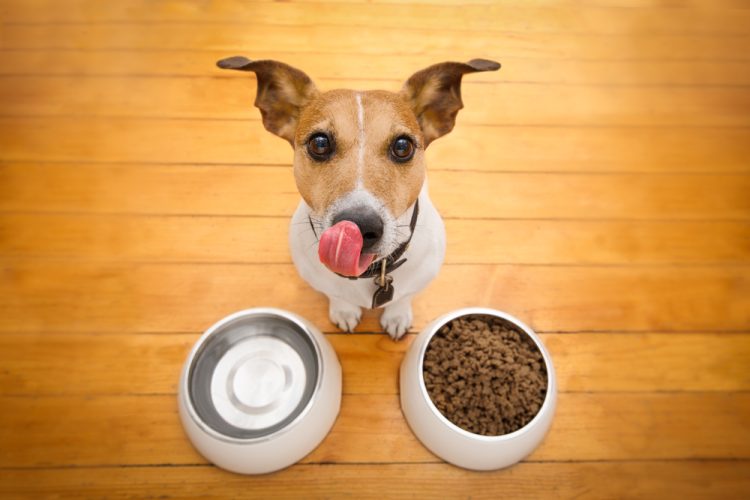As a pet owner, one of your primary responsibilities is to ensure that your dog is eating a balanced diet in the correct amount. Whether you’re feeding your dog a commercial kibble, raw food, or home-cooked meals, it’s essential to understand the right portion size for their breed, age, activity level, and overall health. Both overfeeding and underfeeding can lead to significant health problems, such as obesity, malnutrition, or other long-term conditions.
But how do you know if your dog is eating too much or too little? In this article, we’ll discuss how to judge whether your dog’s food intake is appropriate and how to determine the right portion size to ensure they’re getting the nutrition they need.
Factors That Influence Your Dog’s Ideal Portion Size
To figure out the correct amount of food for your dog, you need to consider several factors that can influence their nutritional needs:
1. Dog’s Size and Weight
The amount of food a dog needs directly correlates with their size and weight. Larger dogs typically need more food than smaller dogs to maintain a healthy weight and energy levels.
- Small dogs: Generally, small breed dogs (under 20 pounds) require fewer calories than larger dogs, but they may have higher energy levels per pound of body weight.
- Medium dogs: Dogs in the 20-50 pound range need moderate amounts of food, and the portion size will vary depending on their activity level.
- Large dogs: Larger breeds, such as German Shepherds or Golden Retrievers, need larger portions to support their size and muscle mass.
- Giant dogs: Extra-large breeds (over 100 pounds), like Great Danes or Mastiffs, require significantly more food, but keep in mind that they may also be more prone to certain health conditions like hip dysplasia, so feeding portions should be carefully managed.
2. Age and Life Stage
Puppies, adult dogs, and senior dogs have different nutritional needs.
- Puppies: Growing puppies need more calories, proteins, and fats to fuel their growth and development. They require more food than adult dogs of the same size to meet their energy needs.
- Adult dogs: Adult dogs need a balanced diet that matches their size and activity level. Overfeeding can lead to obesity, so portion control is essential.
- Senior dogs: Older dogs may need fewer calories, especially if they’re less active. Senior dogs often require diets that are easier to digest and lower in fat, but the portion sizes may be reduced to prevent weight gain.
3. Activity Level
A dog’s level of physical activity greatly impacts how much they should eat.
- Highly active dogs: Working dogs, sporting dogs, and those that get a lot of exercise (e.g., running, hiking, or playing fetch) require more calories to sustain their energy.
- Moderately active dogs: Dogs that get daily walks and playtime but aren’t engaged in heavy physical activity may need a more moderate portion size.
- Inactive or sedentary dogs: Dogs that lead a mostly sedentary lifestyle (e.g., older dogs, dogs with medical conditions, or dogs that are indoors all day) will require fewer calories.
4. Breed-Specific Considerations
Different dog breeds have different nutritional needs. For example, some breeds, like Labrador Retrievers, are more prone to obesity, so portion control and food quality are essential. Other breeds may have specific dietary needs related to their metabolism or health issues. Always check with your vet to see if your dog’s breed has any specific dietary requirements.
5. Health Conditions
Health problems, such as diabetes, hypothyroidism, gastrointestinal issues, and kidney disease, can affect how much and what type of food your dog should consume. Dogs with these conditions often require special diets prescribed by a veterinarian.
How to Assess Whether Your Dog is Eating Too Much or Too Little
Now that you understand the factors that affect your dog’s portion size, it’s important to learn how to monitor your dog’s eating habits and body condition to determine if they’re getting the right amount of food.
1. Monitor Their Body Condition Score (BCS)
One of the best ways to assess if your dog is eating the right amount of food is by monitoring their Body Condition Score (BCS). BCS is a scale used to assess your dog’s weight and overall body condition, helping to determine if they are underweight, overweight, or at an ideal weight.
- 1-3 (Underweight): Your dog may have visible ribs, a prominent waist, and a very thin appearance. This could indicate that they are eating too little, or they may have health issues affecting their weight.
- 4-5 (Ideal Weight): Your dog has a visible waistline, ribs that are easily felt but not visible, and an overall healthy body shape. This is the ideal range, indicating that your dog is eating the right amount of food.
- 6-9 (Overweight): Your dog may have a rounded belly, less defined waistline, and ribs that are difficult to feel due to excess fat. If your dog falls into this range, they are likely eating too much and may need their portion sizes reduced.
Use this scale regularly to assess your dog’s physical appearance. If they’re in the underweight or overweight category, adjust their food intake accordingly.
2. Check for Excessive Hunger or Lack of Appetite
- Too much food: If your dog is eating large portions of food but still seems to be begging for more or constantly scrounging around for food, it could be a sign that you’re feeding them too much, or the food isn’t providing adequate nutrition. Overeating can also lead to weight gain and gastrointestinal discomfort.
- Too little food: If your dog is consistently leaving food behind, shows signs of lethargy, or seems overly hungry, it may indicate that you’re underfeeding them, and they may need more calories or better-quality food.
3. Assess Their Energy Levels
- Too much food: Overfeeding can lead to obesity, which can make your dog sluggish or less energetic. If your dog is constantly tired, sluggish, or reluctant to play, it might be a sign that they’re eating too much and gaining unnecessary weight.
- Too little food: If your dog seems weak, fatigued, or uninterested in activities they once enjoyed, it could be a sign that they’re not getting enough nutrition. Underfed dogs may also show signs of irritability and anxiety.
4. Regular Vet Checkups
Your veterinarian is the best resource for assessing whether your dog is eating the right amount of food. Regular vet checkups are essential, especially if you notice changes in your dog’s weight or eating habits. Your vet can help adjust your dog’s diet based on their weight, health condition, and any changes in their activity levels. They can also recommend specific dog foods tailored to your pet’s needs.

How to Adjust Your Dog’s Food Intake
If you determine that your dog is eating too much or too little, here are a few tips on how to adjust their food intake:
1. Adjust Portion Sizes
Based on your dog’s size, age, activity level, and health, adjust the portion sizes according to the guidelines on the dog food packaging or your vet’s recommendations. You can also use a food scale to measure portions accurately.
2. Feed High-Quality Food
Make sure you are feeding your dog high-quality food with the right nutrients, vitamins, and minerals to maintain their health. Poor-quality food can lead to excessive hunger or obesity despite eating enough calories. Look for a food with high-quality proteins, fats, and fiber to ensure your dog is getting the best nutrition.
3. Offer Regular Meals Instead of Free-Feeding
For many dogs, free-feeding (leaving food out all day) can lead to overeating, especially if you have a breed prone to obesity. Instead, offer two to three meals a day to control portion sizes. This approach helps with digestion and ensures that your dog is eating the correct amount.
4. Use Treats in Moderation
Treats should not make up more than 10% of your dog’s daily caloric intake. Excessive treats can contribute to weight gain. If you’re using treats for training, consider reducing their regular food portions slightly to account for the extra calories.
5. Increase or Decrease Activity Levels
Sometimes adjusting your dog’s activity level can help balance their food intake. If your dog has become less active, consider incorporating more exercise into their routine. Conversely, if your dog is very active, you may need to feed them more to compensate for the calories burned.
Conclusion
Determining the right portion size for your dog is crucial to ensuring their health and well-being. By paying attention to factors such as size, age, activity level, and body condition, you can gauge whether your dog is eating too much or too little. Monitoring their physical appearance, energy levels, and appetite will help guide you in adjusting their food intake. And, of course, regular check-ups with your veterinarian are essential for maintaining a healthy, balanced diet for your dog. By finding the right balance of food and exercise, your dog can lead a healthy, happy life.




